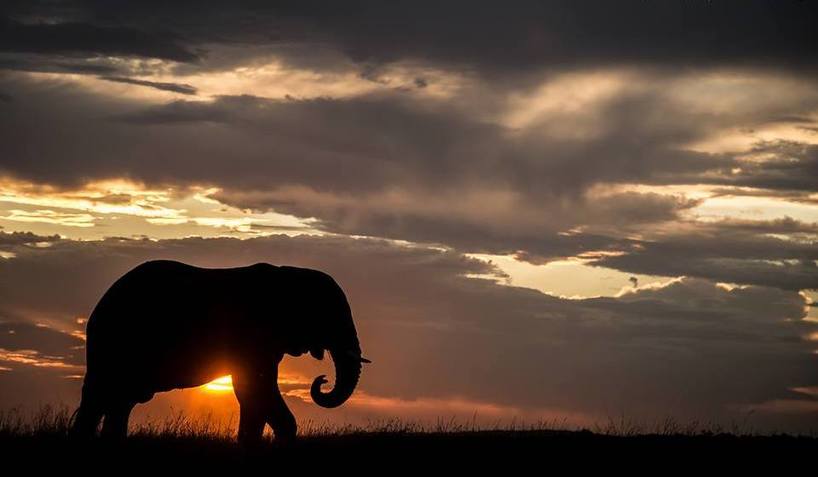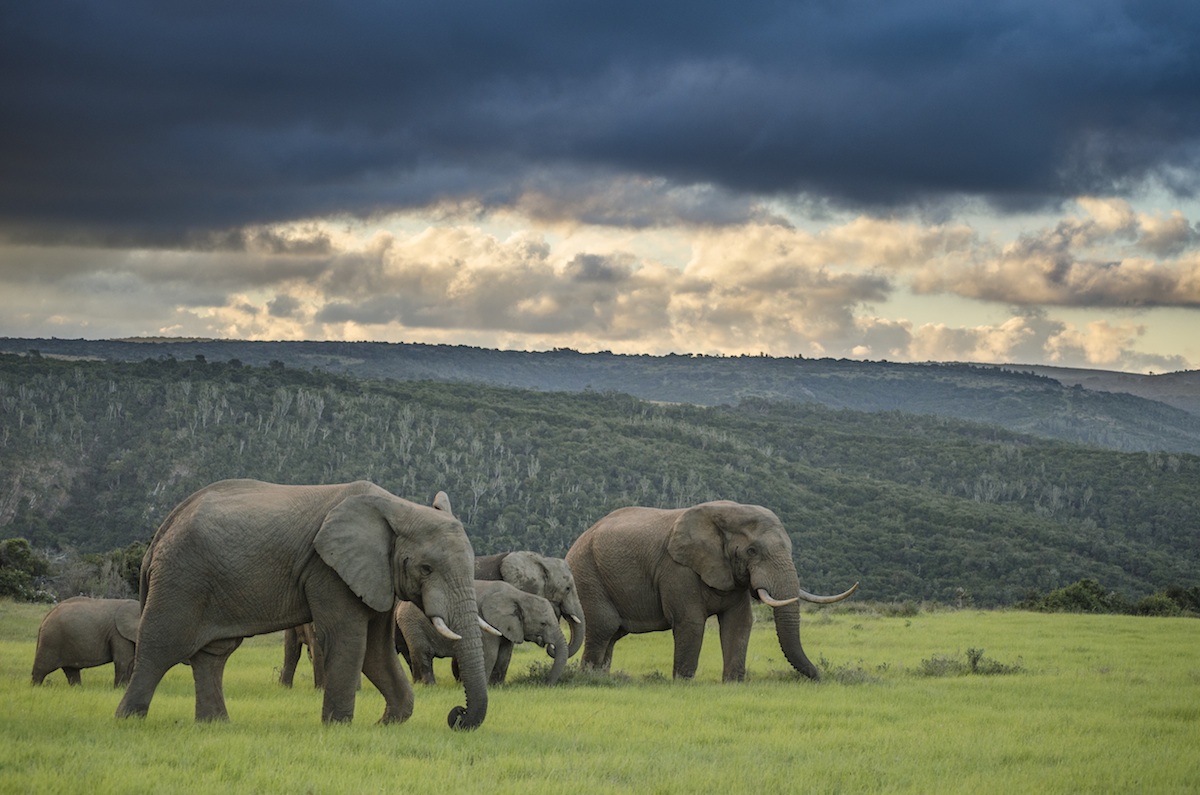Conservation: African Elephants

When it comes to wildlife conservation in Africa no single species challenges our knowledge of their influence, their impact on ecosystems and our ability to manage protected areas effectively more than African elephants.
When elephants roamed freely across sub-Saharan Africa the vast expanse absorbed any negative impacts they had on the ecosystems. In fact, their presence in a system ensured diversity and earned them the names “ecosystem engineers” and “umbrella species”. African elephants are able to open up areas which allows for the flow of genetic material for both fauna and flora. Macro-habitats are maintained and guarantee stability while micro-habitats are created for other organisms.
However, African elephants also place a massive demand on resources. There impact is further increased by their long lifespan (about 60 years) and average population growth rate of 7% per year. These factors put them on a collision course with the ever-increasing human population, a species with even higher resource demands! Like us, elephants need space and lots of it to get access to food as they need to consume about 5% of their body weight per day. To put this into perspective, an adult male African elephant (approx. seven tons) needs to eat about 350 kilograms of vegetation per day. In addition to their enormous appetite, elephants also need regular access to water which again increases their conflict with humans.
Today African elephants are mainly confined to protected areas where they enjoy freedom in a much limited range compared to what they were used to. This limitation can cause stress for the elephants, the environment and the other species that they share it with. Ironically, if this is not managed correctly, these “umbrella species” that used to ensure the success of so many other creatures can ultimately lead to the demise of the entire ecosystem.

New Research to Help Conservation of African Elephants
African elephants have only been intensively studied since the early 1960's and a key learning has been that their specific needs, impacts and behaviours are as diverse as the habitats they live in. What holds true for elephants in Kenya won't necessarily be relevant for the elephants at Kariega Game Reserve in the Eastern Cape of South Africa. However, wildlife conservationists collaborate and learn from each other, test and monitor systems to find commonalities and differences and then adapt management strategies accordingly.
The conservation of African elephants is an ongoing process at Kariega and we are constantly working to ensure the health of our ecosystems and the African elephants who live here. The monitoring processes are not limited to elephants, but to many other systems including vegetation assessments, animal censuses, predator-prey relations, disease monitoring an many other forms of research.
In order to implement best practice and use the latest available research and data, our conservation team partners with a variety of institutions and organizations. One such partnership is with the Elephant Reintegration Trust on a new project which aims to develop welfare parameters for African elephants on game reserves in South Africa. Kariega Game Reserve will be working with the Trust on this research project to try to determine the maximum optimal density for elephants in the Eastern Cape. The study will be run between October 2019 and May 2020 and be lead by researcher Tammy Eggeling.
The predominant vegetation in our area is called Albany thicket which is able to sustain a high density of elephants due to the growth forms and structures of the plants that occur here. This type of vegetation also reacts positively when browsed by elephants. This makes our area a good one to isolate elephant density as a cause of abnormal stress.
The research will focus on measuring the glucocorticoid levels in the elephant population as an indicator of stress. Glucocorticoid is a substance released by the outer region (cortex) of the adrenal glands post stress as an antidote to the release of adrenaline by the inner region (medulla) of the adrenal glands. Glucocorticoid brings the body back into hormonal balance (homeostasis). Adrenaline works itself out of the body very quickly but glucocorticoid takes up to 40 hours do its job. As the amounts of these two substances in the body are directly related to each other, glucocorticoid levels can be used to measure stress in elephants. Glucocorticoid can be measured in blood, urine- and faecal samples. We will be measuring the levels of this substance in elephant dung as this is very easy to find! Food takes approximately 40 minutes to move through an elephant's gut and as they consume so much food we hope that we will not have any problems getting fresh samples into a freezer within 45 minutes. We will definitely mark these samples clearly as we don’t want to confuse our TV dinners with frozen elephant dung!
Over the past 15 years the use of faecal glucocorticoid has been widely used to monitor elephants stress levels as an indicator of the effectiveness of elephant conservation management strategies. A baseline for free-roaming elephants was established for the Kruger National Park (KNP) in 2005. Although each area needs to be evaluated on its own criteria due to the variables that can influence stress, comparing the KNP results with those gathered at Kariega Game Reserve will give us a clear guideline on acceptable stress levels for our elephants. This data will also help us to improve the conservation and protection of African elephants at Kariega and in the Eastern Cape.
We also hope that the research findings will be used in conjunction with other elephant-related research currently underway as evidence to policymakers that more habitat needs to be made available for elephant conservation. African elephants have a non-ruminant or hind gut digestive system (like horses). The advantage of this specific digestive system is that it allows these mega-herbivores to live on low quality but high quantity food. African elephants can thus be accommodated in marginal habitats where agriculture and livestock farming are not viable options but eco-tourism can flourish. This way hopefully humans and African elephants can find a way to live next to each other while all the organisms under their “umbrella” continue to benefit, including us.
Comments on Conservation of African Elephants
We invite you to share your comments and thoughts about African elephant conservation as well as your experiences with African elephants via YouTube, Facebook, Instagram and Twitter or leave us a comment below. We also encourage you to subscribe to our blog so that you can receive updates and future articles via email.
African elephant photographs thanks to guide Louis.








